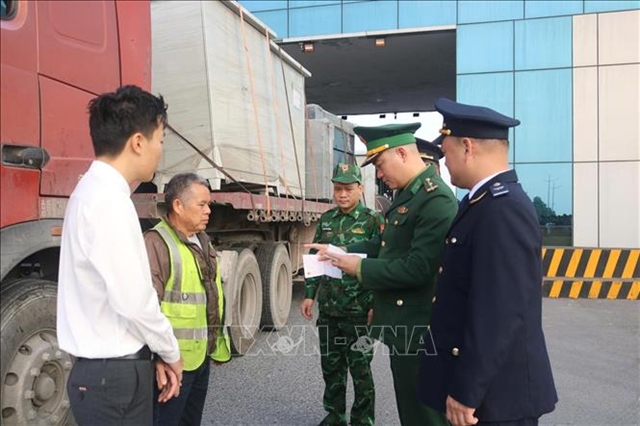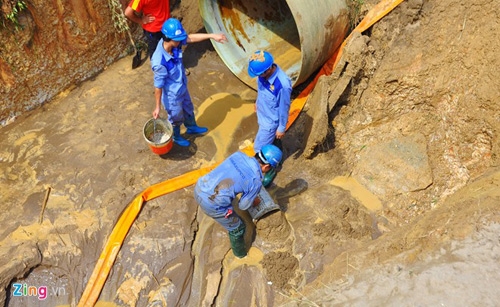 Economy
Economy

A contract relating to the construction of Đà River Water Project Phase 2 between a Vietnamese water supply company and a Chinese pipe supplier has not yet been signed, said an official.
 |
Concerns have been raised by the public about the quality of the project as well as the choosing of the Chinese contractor as the pipe has broken 17 times since the completion of the first phase in 2009. — Photo zing.vn |
HÀ NỘI (VNS) — A contract relating to the construction of Đà River Water Project Phase 2 between a Vietnamese water supply company and a Chinese pipe supplier has not yet been signed, said an official.
Trương Quốc Dương, deputy general director of the Vinaconex Water Supply Joint Stock Company (Viwasupco), the project’s developer, told Tiền Phong (Pioneer) newspaper that the company and Xinxing Corporation were drafting the contract.
Viwasupco was making a report on the project’s implementation to submit to the Department of Construction and the City’s People’s Committee, Dương said.
The contract, which was supposed to be signed this week, was postponed after Deputy Prime Minister Nguyễn Xuân Phúc instructed the city administration to review the whole project.
The deputy Prime Minister also urged Hà Nội authorities to clarify information relating to the project after concerns by local residents.
Solutions should be put forward to ensure the project is effectively carried out on schedule, and in accordance with state regulations, he said.
Phúc asked local authorities to submit a report on the case by March 31.
In a related development, the city’s department of construction held a meeting on Monday afternoon with relevant agencies and the project developer to hear Viwasupco’s report on how it had sought and chosen the Chinese contract.
No competence agencies had raised their voice against the choice of ductile iron pipes or the Chinese contractor, Dương said.
The Hà Nội Construction Department would report the case to the city’s administration after the meeting, he said.
Last week Viwasupco announced that China’s Xinxing Corporation had won the bid for the supply of materials for the second phase of the Đà River water pipeline.
The firm would supply materials at about 10 per cent less than the approved cost, according to the Viwasupco’s press release.
Concerns have been raised by the public about the quality of the project as well as the choosing of the Chinese contractor as the pipe has broken 17 times since the completion of the first phase in 2009.
The construction of Đà River Water Project Phase 2 is an important project for providing clean water to people in the capital, and ensuring livelihood security and social stability.
Because of the importance of the project, Viwasupco conducted open international bidding to choose contractors with sufficient capacity and experience, the company said in a press release.
After a strict and careful selection process, Xinxing Corporation was chosen by Vinwasupco for the supply of ductile iron pipes and fittings.
The second phase of the project started last October after several delays. The project is one component of a larger project to supply clean water to nearly 200,000 households living along the chain of Sơn Tây, Hòa Lạc, Xuân Mai and Miếu Môn, as well as the Hà Nội and Hà Đông urban areas.
Hà Nội authorities have asked agencies to speed up the progress of projects in Hà Nội including the Đà River Water Project Phase 2 to ensure water supply for urban areas, especially in the summer time.
In a written request sent to agencies, Hà Nội City’s Party Committee has also asked water supply companies to operate at full capacity and review water supply systems as a ground for upgrading the existing system.
It called for more investment from other sources to develop water supply companies and water supply systems to meet the clean water needs of the city’s urban and suburban areas.
The Party Committee has also demanded that companies intensify the use of surface water and gradually reduce the exploitation of underground water. — VNS